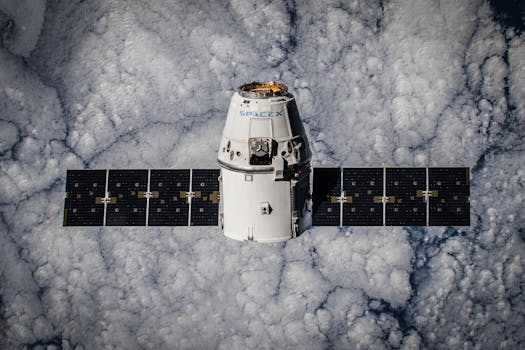
The Future of Satellites: A New Era in Space Exploration
The Future of Satellites is an exciting and rapidly evolving field, with new advancements in technology and innovations in space exploration being made every day. Satellites have been a crucial part of our daily lives, providing us with navigation, communication, and weather forecasting. However, the future of satellites holds even more promise, with the potential to revolutionize the way we live and work.
One of the most significant advancements in satellite technology is the development of satellite constellations. These constellations are made up of hundreds or even thousands of small satellites that work together to provide global coverage and connectivity. Companies such as SpaceX and OneWeb are leading the charge in this area, with plans to launch thousands of satellites in the coming years. This will enable the provision of high-speed internet access to remote and underserved communities around the world, bridging the digital divide and opening up new opportunities for economic growth and development.
Another area of innovation in satellite technology is space-based solar power. This involves collecting solar energy in space and beaming it back to Earth as a microwave beam. This technology has the potential to provide a clean and constant source of energy, reducing our reliance on fossil fuels and helping to combat climate change. Companies such as Solaren and Mitsubishi Heavy Industries are already working on developing this technology, with plans to launch the first commercial space-based solar power systems in the near future.
Advancements in Satellite Technology
Advancements in satellite technology are also enabling the development of new applications and services. For example, satellite-based Earth observation is becoming increasingly important for monitoring climate change, tracking natural disasters, and managing natural resources. High-resolution imaging satellites such as WorldView-4 and GeoEye-1 are providing unprecedented levels of detail and accuracy, enabling scientists and policymakers to make more informed decisions.
Satellite-based navigation is another area where significant advancements are being made. The development of new navigation satellite systems such as the European Union’s Galileo and China’s BeiDou is providing greater accuracy and reliability, enabling a wide range of applications from precision agriculture to autonomous vehicles. These systems are also enabling the development of new services such as satellite-based augmentation systems, which provide corrections to GPS signals and enable more accurate navigation.
Challenges and Opportunities
Despite the many advances in satellite technology, there are also challenges and opportunities that need to be addressed. One of the biggest challenges is the issue of space debris, which poses a significant threat to the long-term sustainability of space exploration. As the number of satellites in orbit increases, so does the risk of collisions and the accumulation of debris. This is a major concern, as it could potentially lead to a catastrophic chain reaction of collisions that could render certain orbits unusable.
Another challenge is the issue of regulatory frameworks, which are often unclear or outdated. This can create uncertainty and barriers to entry for new companies and technologies, hindering innovation and growth. There is a need for more coordinated and effective regulatory frameworks that can keep pace with the rapid evolution of satellite technology and space exploration.
However, these challenges also present opportunities for innovation and growth. For example, the development of new technologies and services to address the issue of space debris could create new markets and opportunities for companies and entrepreneurs. Similarly, the development of more effective regulatory frameworks could enable greater investment and innovation in the satellite and space industries.
Conclusion
In conclusion, the future of satellites is looking bright, with advancements in technology and innovations in space exploration holding great promise for the future. From satellite constellations to space-based solar power, the possibilities are endless. However, there are also challenges and opportunities that need to be addressed, from the issue of space debris to the need for more effective regulatory frameworks. By working together to address these challenges and capitalize on these opportunities, we can unlock the full potential of satellite technology and create a brighter future for all.

